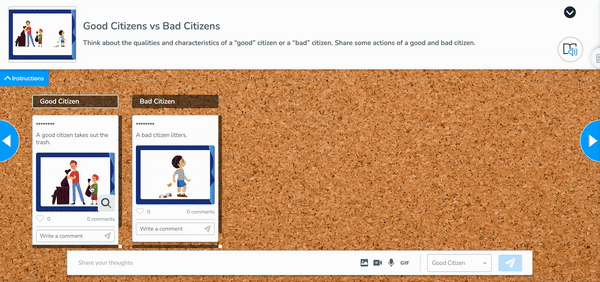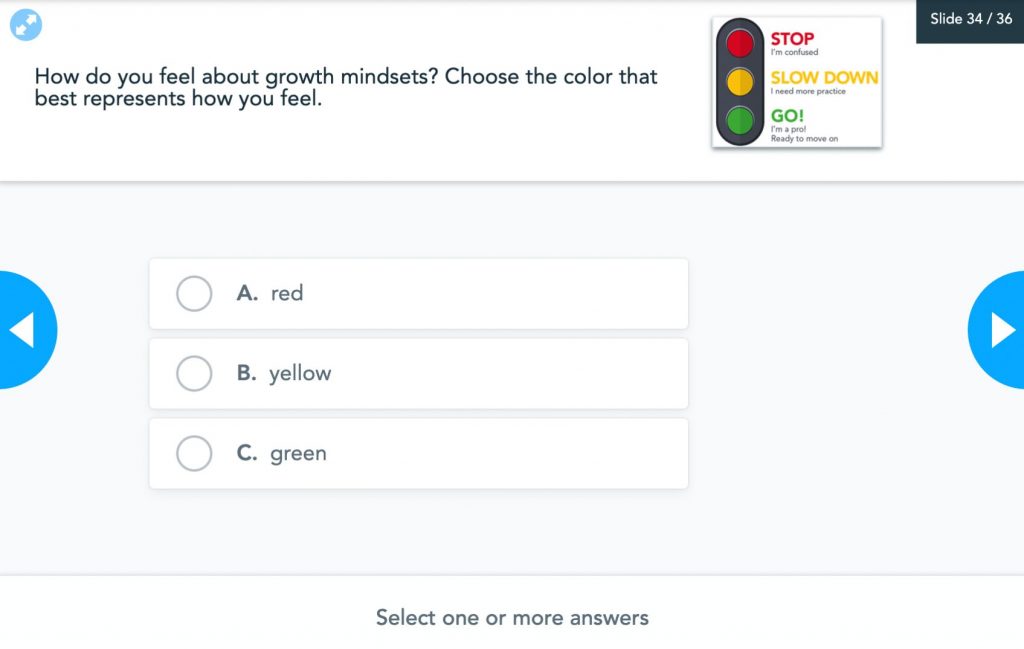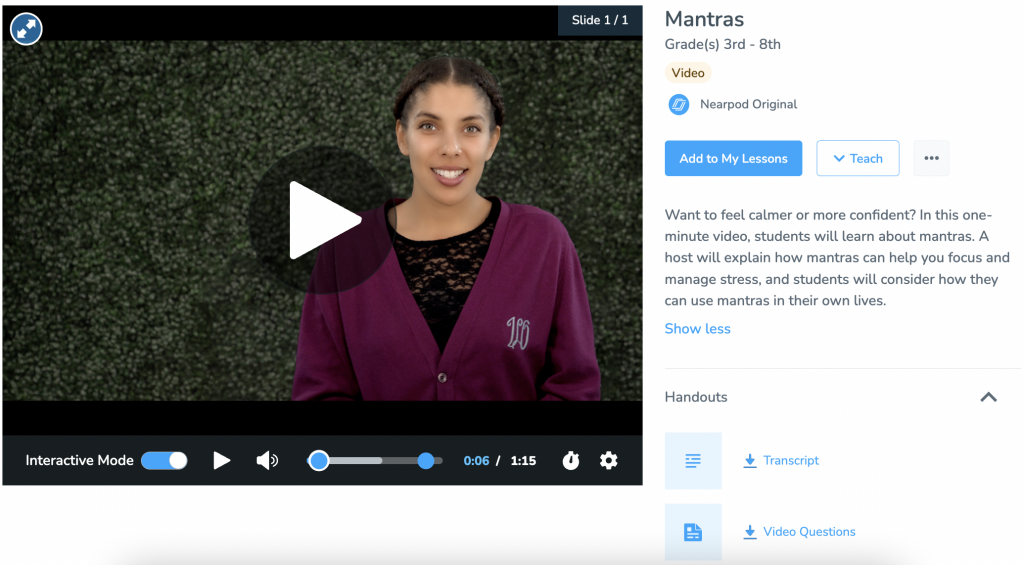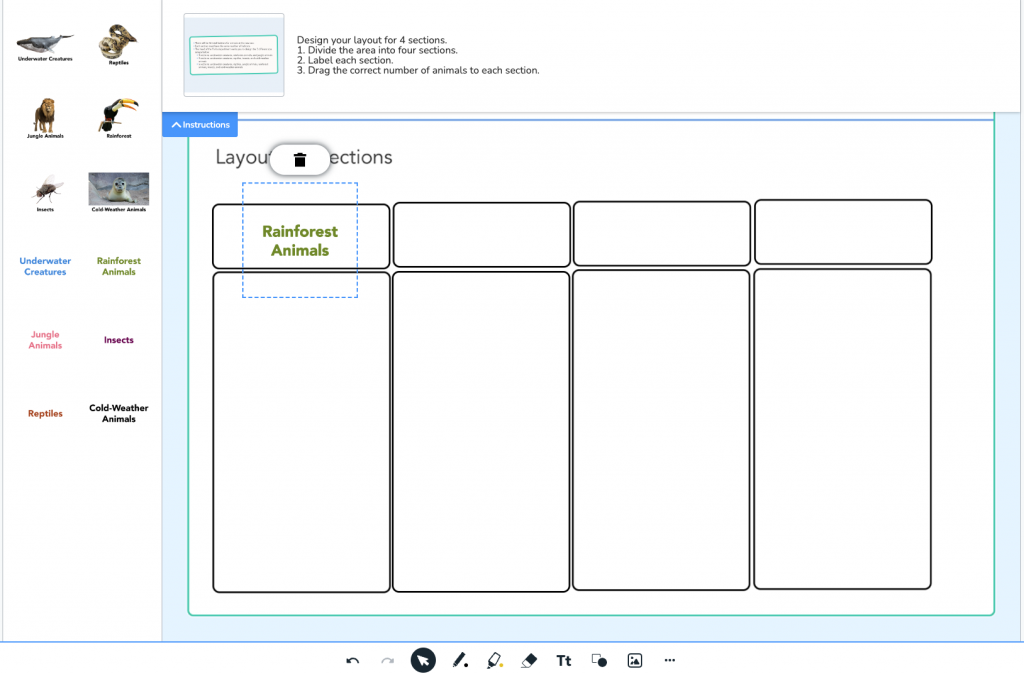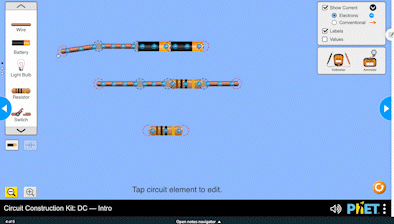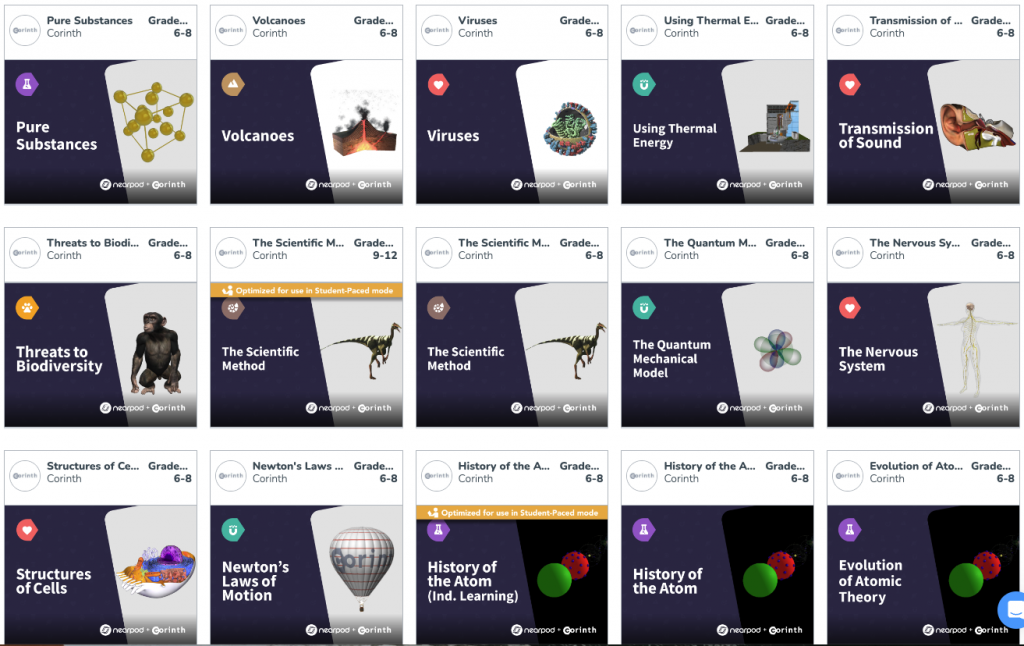
How to implement the 4Cs in education to teach 21st-century skills
What are the 4Cs in education?
The 4Cs in education are collaboration, communication, creation, and critical thinking, which represent the knowledge, skills, and expertise students need today to prepare for tomorrow’s workforce. The Partnership for 21st Century Learning (P21) claims that with the influx of technology and trends in our global economy, students need more interpersonal and intrapersonal skills to achieve professional and personal success. In its Frameworks for 21st Century Learning, P21 describes how the 4Cs of 21st-century skills are foundational for learning and innovation and are skills that everyone needs to practice and hone throughout schooling. These skills are not independent — they are entwined with one another when promoting progress in the classroom.
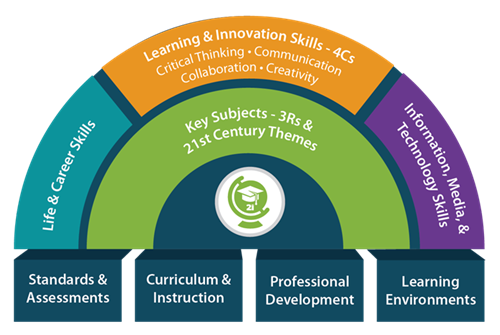
What is the importance of 4Cs in education?
The 4Cs approach to teaching and learning focuses on whole child education and makes it easier for a school to establish a positive school culture and build a common community among its stakeholders: students, families, and teachers. Most educators will not be surprised by this perspective, as whole child education has been a constant thread in schools for decades. In whole child education, teachers seek to support not just the academic but also the emotional and social skills of individual children. Since the days of Dewey, educators have sought to support children’s overall well-being while inciting their curiosity to become lifelong learners. In addition to a mastery of key subjects, P21 wove in interdisciplinary themes such as global awareness and civic literacy as part of their framework. However, it was their learning and innovation skills that took hold. Many educators now lean on this idea of the 4Cs in constructing their curriculum and daily activities. The importance of 4Cs in education has even led many to personalize the 4Cs by adding a fifth, sixth, or seventh C—whether that C stands for Community, Citizenship, or Character.
Teaching the 4Cs with technology tools: Nearpod
When it comes to technology, nowadays, students can find an answer with a click of a button. The clout of memorization has lost its hold, as students are now challenged to apply their newfound knowledge and expand upon it—not just recite it. Educational trends have shifted, especially with the influx of digital technologies, and classrooms must step up to prepare students to be effective and engaging contributors. Start teaching the 4Cs with technology using Nearpod. Platforms like Nearpod support educators in providing rich content while also challenging students to analyze, apply, evaluate, and create through active learning strategies and formative assessment, all to drive student engagement. Nearpod encourages students and teachers alike to take a personalized approach to education by leveraging the 4Cs in education through working with the whole class, small groups, and individuals. Students are more actively engaged in learning when presented with media-rich content and interactive functionality. Plus, educators receive real-time assessment data from their classrooms, enabling them to pivot and be more responsive in their teaching methods.
New to Nearpod? Teachers can sign up for free below to access these resources, interactive activities, and engaging lessons.
Nearpod’s 21st Century Readiness Curriculum Program
Nearpod’s 21st Century Readiness Program includes over 400 SEL lessons, activities, and videos built on CASEL’s five core competencies: self-awareness, self-management, social awareness, relationship skills, and responsible decision-making.
Provide educators with an easy way to integrate SEL practices like positive interactions, gratitude, and reflective moments into daily learning to help create safe, inclusive, and effective classroom environments. Administrators can schedule a call with an expert to explore Nearpod’s 21st Century Readiness Program and unlock the full power of Nearpod for schools and districts.
How to implement the 4Cs in education to teach 21st-century skills
1. Collaboration
From the early days of kindergarten, kids learn the importance of cooperation, which is fundamental to the notion of collaboration, which is when two or more people work together towards a common goal. Good collaboration takes trust and respect to work together, be heard, and make decisions. Traditionally, educators promote collaboration with active learning strategies such as think-pair-share or jigsaw. They build small group work into lesson activities so that students learn and practice such participation and team-building skills.
Nearpod’s Collaborate Board makes it easy for students to share their thinking, comment on their posts, and build upon each other’s ideas in real time. Whether in person or working remotely, students can connect with one another via the interactive board, and teachers can monitor and review all perspectives. Nearpod provides a safe space for such collaboration to occur, and educators can foster such an exchange of ideas in a productive manner.
See Collaborate Board in action through these science lessons about infectious diseases. Use this lesson in high school classrooms to deconstruct sophisticated ideas about transmission and outbreaks of communicable diseases to share in their own words via a Collaborate Board.
Here are some tips from this blog post sharing ways to create collaborative learning experiences in the classroom:
- Make collaborative classroom discussions part of every lesson
- Keep feedback at the center of classroom discussions
- Make collaborative learning visible
- Collaborate and contribute in multiple formats
- Build community and social emotional skills
2. Communication
Part and parcel of collaboration are strong communication skills. Today’s communication skills are more nuanced depending on whether communication is happening in person, in writing, or virtually online. There has been more of a focus on the 21st-century literacy skills of speaking and listening since we have more dynamic communication channels these days. From the science of reading to digital literacy and media literacy, students are schooled in ways to be not only effective but respectful communicators. Teachers strive to promote creative expression so students can find their own voice while appreciating others’.
Nearpod promotes class discussions within the pre-made lessons to spark meaningful conversations. Polls can be used to initiate discussions. Open-ended questions invite diverse perspective taking for 4Cs education. Students can practice articulating and conveying their ideas, whether they seek to inform, instruct, motivate, or persuade others. Nearpod’s formative interactive assessments, which can be embedded into videos and slides, open up avenues of exchanges, whether in person or through written responses. Students can practice listening effectively and exercise flexibility to promote dialogue, which can occur 24/7 and not just within the hours of a school day.
3. Creativity
Creativity has finally clawed its way to the top of Bloom’s Taxonomy. The apex of higher-order thinking now culminates in creating something new via self-expression. Many teachers strive to take a cross-curricular approach to designing their learning objectives so that students can better digest and make connections with new knowledge; they can then find application in their real world and build upon their own skill sets. Improv and design thinking have long embraced the notion of “Yes, and …” to encourage risk-taking and innovation.
Regarding creativity, Nearpod celebrates all learning styles and provides various ways for students to read, watch, and interact with content. Teachers can add multimedia to their lessons, and in turn, students can use interactive tools like Collaborate Board to brainstorm ideas and respond to or build upon the lesson content. The Draw It tool provides a digital whiteboard for students to draw, type, and add images to communicate and refine their ideas and responses. For instance, when learning about Ancient Greece, students can dive into an article, watch a video, or take a Virtual Reality (VR) Field Trip related to architecture and then be challenged to map out a blueprint or to draw their own interpretation of or enhance a famous relic. Students are able to “show what they know” in original ways in real time.
“Designing a City Zoo,” a 3-lesson experience built in partnership with Freckle, teaches elementary students about whole-number quotients through problem-solving. The lessons for grade 3 invite students to ask their own questions and to answer them creatively with tools such as Drag and Drop and Draw It:
4. Critical thinking
Lastly, but underlining all tasks, is the importance of critical thinking skills. This focus on decision making and problem solving goes beyond mere mathematics by promoting high-order thinking across key subject areas. Critical thinking requires the ability to interpret, analyze, and evaluate information (facts and otherwise!) to refute arguments, make judgments, and think through solutions. Such logic skills also include developing a true willingness to listen to and consider others’ ideas. This iterative mindset is crucial in an ever-changing world that negates one-and-done solutions. Critical thinking skills are key to the other Cs in helping students become thoughtful questioners (communication), helpful participants (collaboration), and transformational contributors (creativity).
Nearpod lessons are built with scaffolded interactive activities designed to help students build toward higher-order critical thinking. Learning objectives are designed to have students analyze, evaluate, explain, problem-solve, and more, which are all components of critical thinking. Teachers can add reflective questions into their lessons, as such systematic thinking behooves us all regarding future personal and professional challenges.
Additionally, specific Nearpod features and content types are designed to encourage critical thinking, such as PhET simulations for math and science instruction.
5. Combining all 4Cs
The 4Cs in education focus on teaching students essential 21st-century skills. The 4Cs in education—collaboration, communication, creativity, and critical thinking—have been vital for two decades and will continue to be, as educators aim to prepare students for future success. Nearpod continues to prepare students for the 21st century by providing an all-in-one platform with interactive lessons, gamified learning, and formative assessments to challenge students’ 4Cs education. Our Corinth high school science lessons incorporate the 4Cs. In the Integumentary System lesson, students can individually explore a 3D model of this system before synthesizing complex information in order to answer a series of questions collaboratively.
Start teaching the 4Cs with Nearpod
We challenge educators daily to design learning experiences that build students into confident and curious learners (two other valuable Cs!). 21st-century learning should look and feel different than a more traditional classroom we might be familiar with and the landscape will continue to evolve so that students develop the knowledge and skills they need. Plus, Nearpod provides professional development to continue improving educators’ skills regarding the 4Cs. These real-world skills of collaboration, communication, critical thinking, and creative skills are ever-important as we all seek to be lifelong learners.
New to Nearpod? Make sure you’re signed up to access these lessons and activities!
Teachers can sign up for free below to access and create interactive lessons. Administrators can schedule a call with an expert to explore Nearpod’s 21st Century Readiness Program and unlock the full power of Nearpod for schools and districts.

Darri Stephens is a dedicated LX (learning experience) designer, passionate about creating quality content and programs for kids, families, and educators. With MAs in Education from both Harvard and Stanford, and work experience at best-in-class ed tech organizations including Wonder Workshop, Nickelodeon, and Common Sense Education, she is steeped in the design thinking process and committed to agile and iterative project management, which has resulted in multi-award-winning programs and products.
